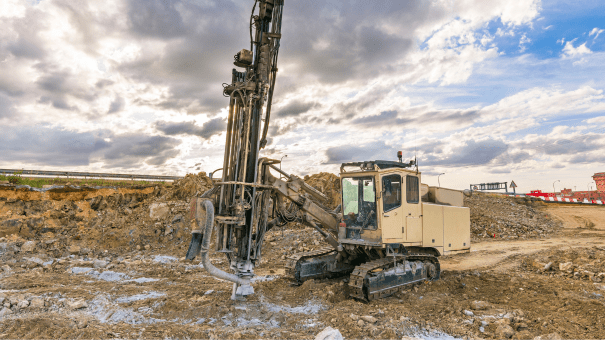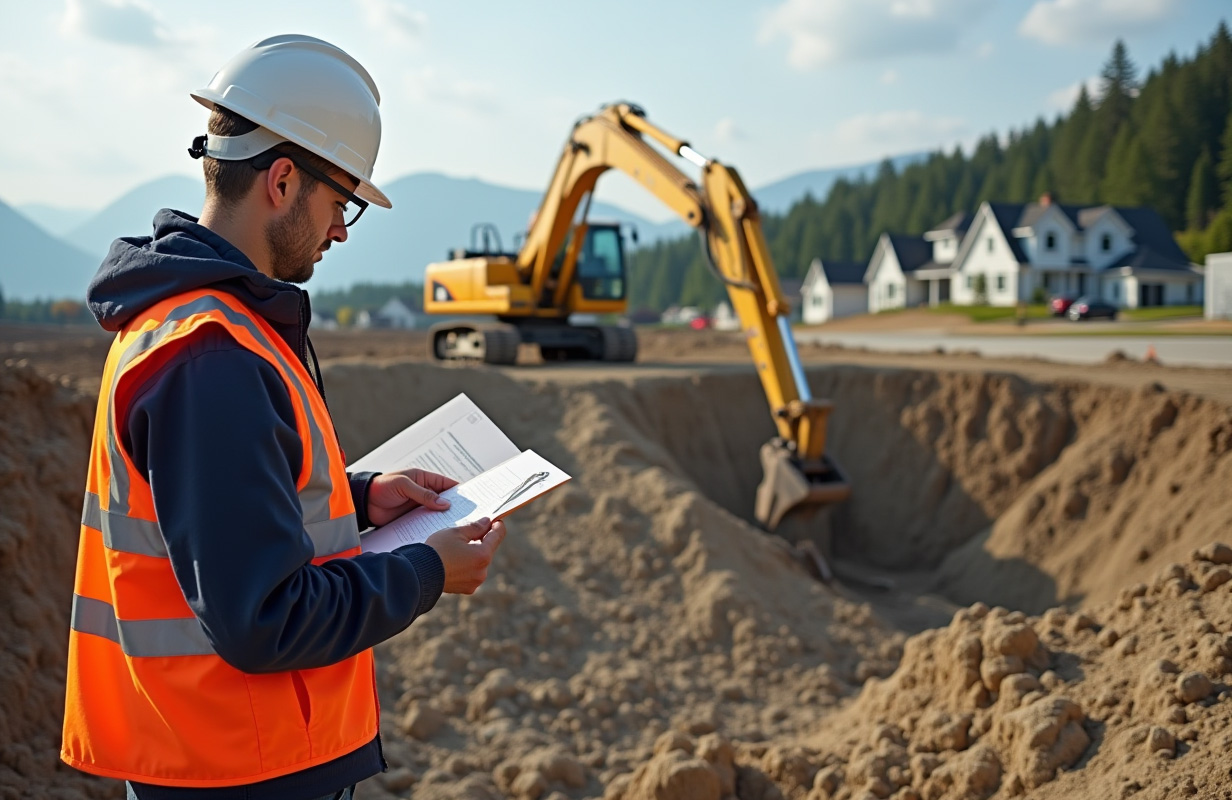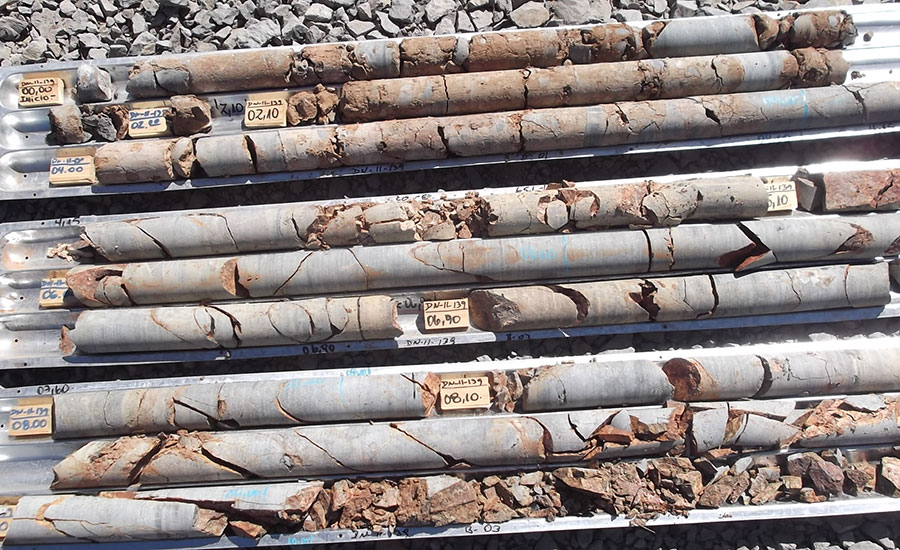Everything You Required to Learn About Geotechnical Engineering for Your Following Project
Everything You Required to Learn About Geotechnical Engineering for Your Following Project
Blog Article
An Extensive Introduction of Geotechnical Design Techniques and Their Influence on Modern Civil Design Projects
Geotechnical design serves as the backbone of modern-day civil engineering, offering crucial methods that resolve the intricacies of subsurface problems. The interaction of soil evaluation, structure style, and innovative modern technologies forms the integrity and sustainability of framework jobs. As we check out these approaches, it ends up being clear exactly how important they remain in mitigating potential threats connected with construction. However, the ramifications of these techniques prolong past simple safety and security; they likewise affect task effectiveness and ecological considerations, elevating important questions regarding future improvements in the field. What remains to be revealed is the transformative potential of these technologies on metropolitan development.
Value of Geotechnical Design
Geotechnical design functions as a critical foundation for civil engineering projects, affecting the safety and security and security of frameworks. This discipline concentrates on the behavior of dirt and rock products, supplying necessary understandings that lead the layout and construction procedures. By comprehending the interaction in between the earth and crafted frameworks, geotechnical designers can analyze dangers related to ground conditions, such as negotiation, slope stability, and liquefaction.
The value of geotechnical engineering prolongs beyond plain architectural honesty; it plays a crucial duty in environmental protection and sustainability. Correctly executed geotechnical analyses make sure that jobs decrease their environmental impact and comply with regulatory requirements (all about geotechnical engineering). In addition, geotechnical design contributes in website selection, enabling designers to recognize ideal areas for building and construction that alleviate possible hazards.
Additionally, geotechnical engineering fosters innovation in civil design by advancing methods for ground improvement, structure design, and excavation. The self-control's payments are important in addressing challenges presented by differing soil conditions, thus facilitating safe and reliable framework growth. Generally, the importance of geotechnical design is critical in making sure that civil design projects are not just practical yet also durable against all-natural and manufactured adversities.
Key Methods in Geotechnical Engineering

Another vital strategy is dirt stabilization, which entails modifying dirt homes to enhance load-bearing capacity or minimize settlement. Approaches such as adding concrete, lime, or using geosynthetics are typically utilized to accomplish dirt improvement.
Ground enhancement techniques, including dynamic compaction and vibro-replacement, are additionally crucial. These approaches aim to compress loose or soft dirts, improving their strength and decreasing liquefaction capacity in seismic locations.
Maintaining structures, such as sheet heaps and soil nailing, are used to support excavations and protect against soil movement. Additionally, slope stabilization strategies, including water drainage systems and retaining walls, are necessary for alleviating landslide risks.

Dirt Evaluation and Testing Techniques
Reliable soil evaluation and screening techniques are important for comprehending the physical and chemical residential or commercial properties of dirt, which straight influence design choices. An extensive analysis of home dirt features is essential for anticipating behavior under various loading conditions and ecological influences.
Typical soil screening techniques include both area and lab strategies. Field tests, such as the Standard Infiltration Examination (SPT) and Cone Penetration Test (CPT), offer prompt insights right into soil thickness, stamina, and stratification. These examinations aid engineers examine site conditions successfully prior to even more comprehensive lab evaluations.
Research laboratory testing approaches, such as Atterberg limitations, grain dimension distribution, and compaction examinations, are important for figuring out soil plasticity, dampness material, and ideal compaction degrees. Advanced techniques like triaxial examinations and consolidated undrained (CU) examinations offer beneficial information on shear toughness and efficient stress and anxiety criteria.
Chemical screening, including pH, electrical conductivity, and organic material evaluation, is also crucial for recognizing potential dirt contamination and its influence on construction materials. Jointly, these dirt analysis and screening approaches develop the structure of informed decision-making in geotechnical design, making sure the safety and security and stability of contemporary civil design projects.
Foundation Design Approaches
Foundation layout methods are critical in making sure the security and longevity of frameworks. These approaches can be categorized into shallow and deep foundations, each suited to specific dirt conditions and packing circumstances. Superficial structures, such as spread footings and mat structures, are usually utilized when surface soils have ample bearing capability. They disperse the lots over a bigger location, decreasing settlement dangers.
On the other hand, deep foundations, including heaps and drilled shafts, are employed when surface area dirts are weak or insufficient for supporting the framework. These foundations transfer lots to much deeper, extra secure dirt or rock layers, making them essential for skyscraper buildings and bridges in challenging geotechnical problems.
Selecting the suitable foundation design includes complete geotechnical examinations, consisting of dirt structure, bearing capability, and groundwater problems. Additionally, engineers need to consider elements such as settlement, side lots, and possible seismic task to make certain the structure's performance gradually.
Eventually, a well-executed foundation style is a crucial facet of civil engineering, straight influencing the here security, resilience, and performance of frameworks. geotechnical specialist. By aligning foundation kinds with site-specific problems, designers can efficiently reduce dangers connected with structure failing
Advancements Forming Civil Engineering

Lasting materials, such as high-performance concrete and recycled aggregates, are also gaining traction, advertising environmentally friendly methods while keeping structural stability. In addition, progressed geotechnical techniques, such as ground enhancement and deep mixing techniques, are boosting the stability of foundations in tough soil conditions.
Moreover, making use of drones and remote noticing innovation is boosting website checking and keeping track of, supplying real-time data that help in taking care of construction progress and safety and security. The implementation of innovative building methods, such as modular and prefabricated building, further expedites task timelines and decreases waste. Collectively, these technologies are not just transforming civil design techniques yet likewise guaranteeing that modern-day facilities fulfills the needs of a growing global population while resolving environmental concerns.
Final Thought
In verdict, geotechnical design methods are essential to the success of modern-day civil design jobs. The application of website investigation, soil stabilization, and ground renovation techniques ensures the security and security of infrastructure. Advancements such as Structure Details Modeling (BIM) and advanced surveillance technologies even more boost task performance and precision. By utilizing these methods, designers can alleviate threats and add to the development of resilient urban atmospheres, inevitably promoting lasting growth and security in civil engineering practices.
Geotechnical engineering offers as the backbone of contemporary civil engineering, providing necessary strategies that resolve the complexities of subsurface conditions.Geotechnical engineering serves as a crucial foundation for civil engineering tasks, influencing anonymous the security and security of structures.In addition, geotechnical engineering cultivates technology in civil engineering by advancing strategies for ground improvement, structure layout, and excavation. Generally, the importance of geotechnical design is paramount in ensuring that civil design projects are not just practical however likewise resilient against man-made and all-natural misfortunes.
In conclusion, geotechnical engineering techniques are essential to the success of contemporary civil design projects.
Report this page